
通信网基本概念与主体结构(英文版)(第2版)
¥ 9.1 1.0折 ¥ 95 八五品
库存18件
江苏南京
认证卖家担保交易快速发货售后保障
作者[美]加西亚(Alderto Leon-Garcia)、[美]维德加加(Indra Widjaja) 著
出版社清华大学出版社
出版时间2005-02
版次1
装帧平装
货号经济7B8一5
上书时间2024-09-18
- 店主推荐
- 最新上架
商品详情
- 品相描述:八五品
图书标准信息
- 作者 [美]加西亚(Alderto Leon-Garcia)、[美]维德加加(Indra Widjaja) 著
- 出版社 清华大学出版社
- 出版时间 2005-02
- 版次 1
- ISBN 9787302078739
- 定价 95.00元
- 装帧 平装
- 开本 16开
- 纸张 其他
- 页数 900页
- 正文语种 英语
- 【内容简介】
-
《通信网基本概念与主体结构》(英文版)(第2版)除对第1版内容进行了更新外,还广泛引入了网络协议分析仪分析各种协议的操作过程。《通信网基本概念与主体结构》内容大致分为三部分。第一部分为综述,由前两章组成。主要通过广泛应用的网络业务介绍网络的变革与发展;并通过网络提供的服务讨论网络协议的分层模型和不同层之间的交互作用。
第二部分以电话网、局域网、分组交换网这些基础网络为例,介绍网络体系结构的基本概念和低层协议的主要技术。这部分包含第3章至第7章,其中,第3章介绍数字传输技术的基础知识,内容有不同媒体信息的数字化描述、数字调制、编码、检错、纠错、信道特性及各种传输媒质特性等。第4章介绍电路交换网络中的几种复用和交换技术,重点是SONET。第5章讨论对等层协议,主要讨论数据链路层的ARQ差错控制协议,滑动窗机理,以及实用的PPP协议和HDLC协议。第6章首先详细讨论媒质访问控制技术,包括随机访问、预约访问、信道化访问,然后对以太网、令牌环、FDDI和无线局域网的基本知识和协议作了简要介绍。第7章讨论分组交换网,介绍了几种常用的路由算法,并对不同类型的流量管理机制作了较为深入的分析。
第三部分讨论TCP/IP和ATM这两种主体网络,并进一步阐明基本的网络概念如何体现在这两种主体网络之中。此外,对当前某些热点课题也作了必要介绍。这部分由5章组成,其中,第8章讨论TCP/IP网络的结构和相关协议,包括IP、IPv6、TCP、UDP、内部路由协议和组播路由协议等。第9章讨论ATM网络,主要介绍ATM层和ATM适配层,并对信令和PNNI路由选择作了基本介绍。第10章介绍现代网络结构中的基本概念和主要协议,包括综合服务、区分服务、互连模型以及RSVP、MPLS、RTTP、SCP等协议。第11章介绍网络安全协议和加密算法。第12章讨论网络中的多媒体技术和相关标准,包括数据压缩、信号编码以及分别用于图像和视频编码的JPEG、MPEG标准。 - 【目录】
-
Preface
AbouttheAuthors
1CommunicationNetworksandServices
1.1EvolutionofNetworkArchitectureandServices
1.1.1TelegraphNetworksandMessageSwitching
1.1.2TelephoneNetworksandCircuitSwitching
1.1.3TheIntemet,ComputerNetworks,andPacketSwitching
1.2FutureNetworkArchitecturesandTheirServices
1.3KeyFactorsinCommunicationNetworkEvolution
1.3.1RoleofTechnology
1.3.2RoleofRegulation
1.3.3RoleoftheMarket
1.3.4RoleofStandards
ChecklistofImportantTerms
FurtherReading
Problems
2ApplicationsandLayeredArchitectures
2.1ExamplesofProtocols,Services,andLayering
2.1.1HTTP,DNS,andSMTP
2.1.2TCPandUDPTransportLayerServices
2.2TheOSIReferenceModel
2.2.1TheSeven-LayerOSIReferenceModel
2.2.2UnifiedViewofLayers,Protocols,andServices
2.3OverviewofTCP/IPArchitecture
2.3.1TCP/IPArchitecture
2.3.2TCP/IPProtocol:HowtheLayersWorkTogether
2.3.3ProtocolOverview
2.4TheBerkeleyAPI
2.4.1SocketSystemCalls
2.4.2NetworkUtilityFunctions
2.5ApplicationLayerProtocolsandTCP/IPUtilities
2.5.1Telnet
2.5.2FileTransferProtocol
2.5.3HypertextTransferProtocolandtheWorldWideWeb
2.5.4IPUtilities
2.5.5TcpdumpandNetworkProtocolAnalyzers
Summary
ChecklistofImportantTerms
FurtherReading
Problems
3DigitalTransmissionFundamentals
3.1DigitalRepresentationofInformation
3.1.1Block-OrientedInformation
3.1.2StreamInformation
3.2WhyDigitalCommunications?
3.2.1ComparisonofAnalogandDigitalTransmission
3.2.2BasicPropertiesofDigitalTransmissionSystems
3.3DigitalRepresentationofAnalogSignals
3.3.1BandwidthofAnalogSignals
3.3.2SamplingofanAnalogSignal
3.3.3DigitalTransmissionofAnalogSignals
3.3.4SNRPerformanceofQuantizers
3.4CharacterizationofCommunicationChannels
3.4.1FrequencyDomainCharacterization
3.4.2TimeDomainCharacterization
3.5FundamentalLimitsinDigitalTransmission
3.5.1TheNyquistSignalingRate
3.5.2TheShannonChannelCapacity
3.6LineCoding
3.7ModemsandDigitalModulation
3.7.1BinaryPhaseModulation
3.7.2QAMandSignalConstellations
3.7.3TelephoneModemStandards
3.8PropertiesofMediaandDigitalTransmissionSystems
3.8.1TwistedPair
3.8.2CoaxialCable
3.8.3OpticalFiber
3.8.4RadioTransmission
3.8.5lnfraredLight
3.9ErrorDetectionandCorrection
3.9.1ErrorDetection
3.9.2Two-DimensionalParityChecks
3.9.3InternetChecksum
3.9.4PolynomialCodes
3.9.5StandardizedPolynomialCodes
3.9.6Error-DetectingCapabilityofaPolynomialCode
3.9.7LinearCodes
3.9.8ErrorCorrection
Summary
ChecklistofImportantTerms
FurtherReading
Problems
Appendix3A:AsynchronousDataTransmission
Appendix3B:FourierSeries
Appendix3C:SamplingTheorem
4Circuit-SwitchingNetworks
4.1Multiplexing
4.1.1Frequency-DivisionMultiplexing
4.1.2Time-DivisionMultiplexing
4.1.3Wavelength-DivisionMultiplexing
4.2SONET
4.2.1SONETMultiplexing
4.2.2SONETFrameStructure
4.3TransportNetworks
4.3.1SONETNetworks
4.3.2OpticalTransportNetworks
4.4CircuitSwitches
4.4.1Space-DivisionSwitches
4.4.2Time-DivisionSwitches
4.5TheTelephoneNetwork
4.5.1TransmissionFacilities
4.5.2End-to-EndDigitalServices
4.6Signaling
4.6.1SignalingintheTelephoneNetwork
4.6.2SignalingSystem#7Architecture
4.7TrafficandOverloadControlinTelephoneNetworks
4.7.1Concentration
4.7.2RoutingControl
4.7.3OverloadControls
4.8CellularTelephoneNetworks
Summary
ChecklistofImportantTerms
FurtherReading
Problems
5Peer-to-PeerProtocolsandDataLinkLayer
PartI:Peer-to-PeerProtocols
5.1Peer-to-PeerProtocolsandServiceModels
5.1.1ServiceModels
5.1.2ExamplesofServices
5.1.3EndtoEndversusHopbyHop
5.2ARQProtocolsandReliableDataTransferService
5.2.1Stop-and-WaitARQ
5.2.2Go-Back-NARQ
5.2.3SelectiveRepeatARQ
5.3OtherPeer-to-PeerProtocols
5.3.1Sliding-WindowFlowControl
5.3.2TimingRecoveryforSynchronousServices
5.3.3TCPReliableStreamServiceandFlowControl
PartII:DataLinkControls
5.4Framing
5.5Point-to-PointProtocol
5.6HDLCDataLinkControl
5.6.1DataLinkServices
5.6.2HDLCConfigurationsandTransferModes
5.6.3HDLCFrameFormat
5.6.4TypicalFrameExchanges
5.7LinkSharingUsingPacketMultiplexers
5.7.1StatisticalMultiplexing
5.7.2SpeechInterpolationandtheMultiplexingofPacketizedSpeech
Summary
ChecklistofImportantTerms
FurtherReading
Problems
Appendix5A:DerivationofEfficiencyofARQProtocols
6MediumAccessControlProtocolsandLocalAreaNetworks
PartI:MediumAccessControlProtocols
6.1MultipleAccessCommunications
6.2RandomAccess
6.2.1ALOHA
6.2.2SlottedALOHA
6.2.3CarrierSenseMultipleAccess
6.2.4CarrierSenseMultipleAccesswithCollisionDetection
6.3SchedulingApproachestoMediumAccessControl
6.3.1ReservationSystems
6.3.2Polling
6.3.3Token-PassingRings
6.3.4ComparisonofSchedulingApproachesinMediumAccessControl
6.3.5ComparisonofRandomAccessandSchedulingMediumAccessControls
6.4Channelization
6.4.1FDMA
6.4.2TDMA
6.4.3CDMA
6.4.4ChannelizationinTelephoneCellularNetworks
6.5DelayPerformanceofMACandChannelizationSchemes
6.5.1PerformanceofChannelizationTechniqueswithBurstyTraffic
6.5.2PerformanceofPollingandTokenRingSystems
6.5.3RandomAccessandCSMA-CD
PartII:LocalAreaNetworks
6.6LANProtocols
6.6.1LANStructure
6.6.2TheMediumAccessControlSublayer
6.6.3TheLogicalLinkControlSublayer
6.7EthernetandIEEE802.3LANStandard
6.7.1EthernetProtocol
6.7.2FrameStructure
6.7.3PhysicalLayers
6.7.4FastEthernet
6.7.5GigabitEthernet
6.7.610GigabitEthernet
6.8Token-RingandIEEE802.5LANStandard
6.8.1Token-RingProtocol
6.8.2FrameStructure
6.9FDDI
6.10WirelessLANsandIEEE802.11Standard
6.10.1AdhocandInfrastructureNetworks
6.10.2FrameStructureandAddressing
6.10.3MediumAccessControl
6.10.4PhysicalLayers
6.11LANBridgesandEthernetSwitches
6.11.1TransparentBridges
6.11.2SourceRoutingBridges
6.11.3Mixed-MediaBridges
6.11.4VirtualLANs
Summary
ChecklistofImportantTerms
FurtherReading
Problems
7Packet-SwitchingNetworks
7.1NetworkServicesandInternalNetworkOperation
7.2PacketNetworkTopology
7.3DatagramsandVirtualCircuits
7.3.1ConnectionlessPacketSwitching
7.3.2Virtual-CircuitPacketSwitching
7.3.3StructureofaPacketSwitch
7.4RoutinginPacketNetworks
7.4.1RoutingAlgorithmClassification
7.4.2RoutingTables
7.4.3HierarchicalRouting
7.4.4SpecializedRouting
7.5Shortest-PathRouting
7.5.1TheBellman-FordAlgorithm
7.5.2DijkstrasAlgorithm
7.5.3SourceRoutingversusHop-by-HopRouting
7.5.4Link-StateRoutingversusDistance-VectorRouting
7.6ATMNetworks
7.7TrafficManagementatthePacketLevel
7.7.1FIFOandPriorityQueues
7.7.2FairQueueing
7.7.3WeightedFairQueueing
7.7.4RandomEarlyDetection
7.8TrafficManagementattheFlowLevel
7.8.1Open-LoopControl
7.8.2Closed-LoopControl
7.9TrafficManagementattheFlow-AggregateLevel
Summary
ChecklistofImportantTerms
FurtherReading
Problems
8TCP/IP
8.1TheTCP/IPArchitecture
8.2TheInternetProtocol
8.2.1IPPacket
8.2.2IPAddressing
8.2.3SubnetAddressing
8.2.4IPRouting
8.2.5ClasslessInterdomainRouting(CIDR)
8.2.6AddressResolution
8.2.7ReverseAddressResolution
8.2.8FragmentationandReassembly
8.2.9ICMP:ErrorandControlMessages
8.3IPv6
8.3.1HeaderFormat
8.3.2NetworkAddressing
8.3.3ExtensionHeaders
8.3.4MigrationIssuesfromIPv4toIPv6
8.4UserDatagramProtocol
8.5TransmissionControlProtocol
8.5.1TCPOperationandReliableStreamService
8.5.2TCPProtocol
8.5.3TCPCongestionControl
8.6InternetRoutingProtocols
8.6.1RoutingInformationProtocol
8.6.2OpenShortestPathFirst
8.6.3BorderGatewayProtocol
8.7MulticastRouting
8.7.1Reverse-PathBroadcasting
8.7.2IntemetGroupManagementProtocol
8.7.3Reverse-Pa&Multicasting
8.7.4Distance-VectorMulticastRoutingProtocol
8.8DHCP,NAT,andMobileIP
8.8.1DynamicHostConfigurationProtocol
8.8.2NetworkAddressTranslation
8.8.3MobileIP
Summary
ChecklistofImportantTerms
FurtherReading
Problems
9ATMNetworks
9.1WhyATM?
9.2BISDNReferenceModel
9.3ATMLayer
9.3.1ATMCellHeader
9.3.2VirtualConnections
9.3.3QoSParameters
9.3.4TrafficDescriptors
9.3.5ATMServiceCategories
9.3.6TrafficContracts,ConnectionAdmissionControl,andTrafficManagement
9.4ATMAdaptationLayer
9.4.1AAL1
9.4.2AAL2
9.4.3AAL3/4
9.4.4AAL5
9.4.5SignalingAAL
9.4.6Applications,AALs,andATMServiceCategories
9.5ATMSignaling
9.5.1ATMAddressing
9.5.2UNISignaling
9.5.3PNNISignaling
9.6PNNIRouting
9.7ClassicalIPOverATM
Summary
ChecklistofImportantTerms
FurtherReading
Problems
10AdvancedNetworkArchitectures
10.1IntegratedServicesintheInternet
10.1.1GuaranteedService
10.1.2Controlled-LoadService
10.2RSVP
10.2.1Receiver-InitiatedReservation
10.2.2ReservationMerging
10.2.3ReservationStyles
10.2.4SoftState
10.2.5RSVPMessageFormat
10.3DifferentiatedServices
10.3.1DSField
10.3.2Per-HopBehaviors
10.3.3TrafficConditioner
10.3.4BandwidthBroker
10.4NetworkInterconnectionModels
10.4.1OverlayModel
10.4.2Peer-to-PeerModel
10.5MPLS
10.5.1FundamentalsofLabels
10.5.2LabelStackandLSPHierarchy
10.5.3VCMerging
10.5.4LabelDistributionProtocols
10.5.5MPLSSupportforVirtualNetworks
10.5.6Survivability
10.5.7GMPLS
10.6Real-TimeTransportProtocol
10.6.1RTPScenariosandTerminology
10.6.2RTPPacketFormat
10.6.3RTPControlProtocol(RTCP)
10.7SessionControlProtocols
10.7.1SessionInitiationProtocol
10.7.2H.323MultimediaCommunicationSystems
10.7.3MediaGatewayControlProtocols
Summary
ChecklistofImportantTerms
FurtherReading
Problems
11SecurityProtocols
11.1SecurityandCryptographicAlgorithms
11.1.1ApplicationsofCryptographytoSecurity
11.1.2KeyDistribution
11.2SecurityProtocols
11.2.1ApplicationScenarios
11.2.2TypesofSecurityService
11.2.3SettingUpaSecurityAssociation
11.2.4IPSec
11.2.5SecureSocketsLayerandTransportLayerSecurity
11.2.6802.11andWiredEquivalentPrivacy
11.3CryptographicAlgorithms
11.3.1DES
11.3.2RSA
Summary
ChecklistofImportantTerms
FurtherReading
Problems
12MultimediaInformation
12.1LosslessDataCompression
12.1.1HuffmanCodes
12.1.2Run-LengthCodes
12.1.3AdaptiveDataCompressionCodes
12.2CompressionofAnalogSignals
12.2.1AdaptiveQuantizers
12.2.2PredictiveCoding
12.2.3TransformandSubbandCoding
12.3ImageandVideoCoding
12.3.1DiscreteCosineTransformCoding
12.3.2TheJPEGImage-CodingStandard
12.3.3CompressionofVideoSignals
12.3.4TheMPEGVideo-CodingStandards
12.3.5MPEGMultiplexing
Summary
ChecklistofImportantTerms
FurtherReading
Problems
Epilogue
Appendices
ADelayandLossPerformance
A.1DelayAnalysisandLittlesFormula
A.1.1ArrivalRatesandTrafficLoadDefinitions
A.1.2LittlesFormula
A.2BasicQueueingModels
A.2.1ArrivalProcesses
A.2.2ServiceTimes
A.2.3QueueingSystemClassification
A.3M/M/1:ABasicMultiplexerModel
A.3.1M/M/1SteadyStateProbabilitiesandtheNotionofStability
A.3.2EffectofScaleonPerformance
A.3.3AveragePacketDelayinaNetwork
A.4TheM/G/1Model
A.4.1ServiceTimeVariabilityandDelay
A.4.2PriorityQueueingSystems
A.4.3VacationModelsandMultiplexerPerformance
A.5ErlangBFormula:M/M/c/cSystem
FurtherReading
BNetworkManagement
B.1NetworkManagementOverview
B.2SimpleNetworkManagementProtocol(SNMP)
B.3StructureofManagementInformation
B.4ManagementInformationBase
B.5RemoteNetworkMonitoring
FurtherReading
Index
点击展开
点击收起
相关推荐
— 没有更多了 —




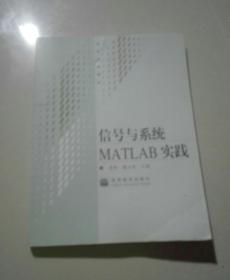

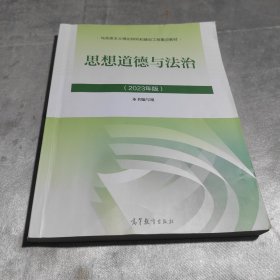
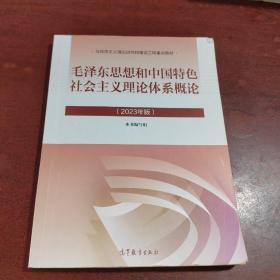
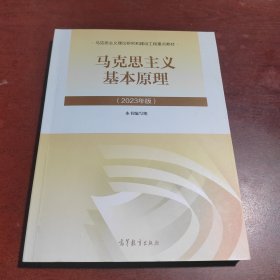
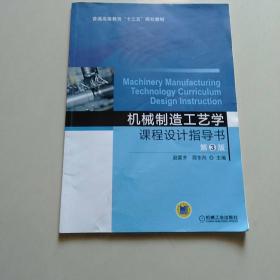
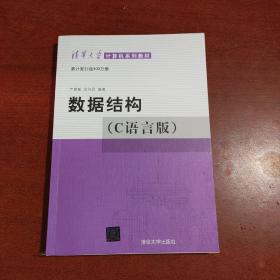
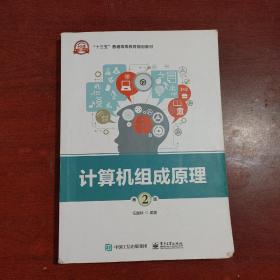

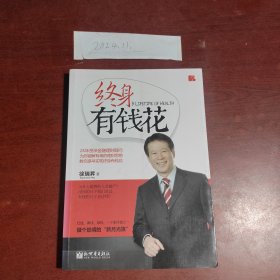











以下为对购买帮助不大的评价